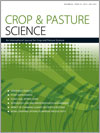Localised supply of phosphorus (P) plus ammonium improves root proliferation and nutrient uptake by plants grown on calcareous soils, but how nitrogen (N) forms (ammonium and urea) and placements affect maize (Zea mays L.) root distribution and nutrient uptake is not fully understood. A soil column study was conducted with four N and P combinations including P plus urea (UP), mono-ammonium phosphate (MAP), di-ammonium phosphate (DAP) and P plus ammonium sulfate (ASP), and two fertiliser application methods (banding in the 10–25 cm layer or mixing throughout the 45-cm soil profile). Shoot N and P content increased by 11–31% and 14–37% in the treatments with banding P plus ammonium (MAP, DAP or ASP) compared with banding UP and the mixing treatments. Shoot N and P uptake rates per root dry weight or root length were higher with banding P plus ammonium than their respective mixing treatments. Banding P plus ammonium increased root-length density in the fertiliser-banded layer compared with banding UP and the mixing treatments. The results show that modifying root spatial distribution by banding P plus ammonium leads to an increase in N and P uptake rates, and consequently enhances nutrient accumulation by maize.
How to translate text using browser tools
13 December 2013
Banding phosphorus and ammonium enhances nutrient uptake by maize via modifying root spatial distribution
Qinghua Ma,
Hongliang Tang,
Zed Rengel,
Jianbo Shen
ACCESS THE FULL ARTICLE

Crop and Pasture Science
Vol. 64 • No. 10
December 2013
Vol. 64 • No. 10
December 2013
Ammonium
banding
maize
nutrient uptake
Phosphate
root spatial distribution




